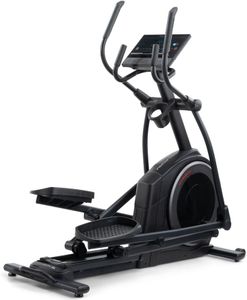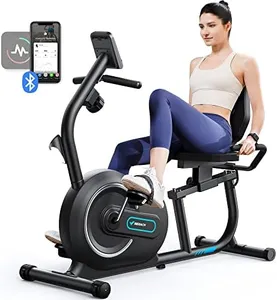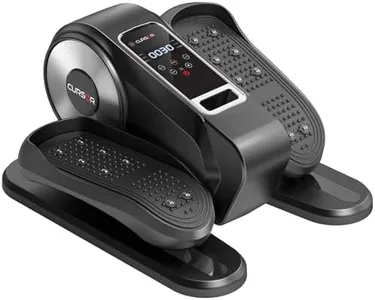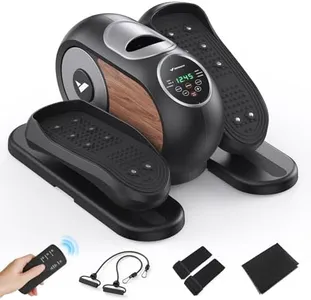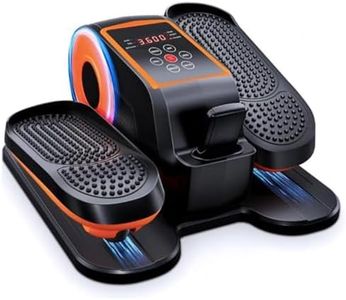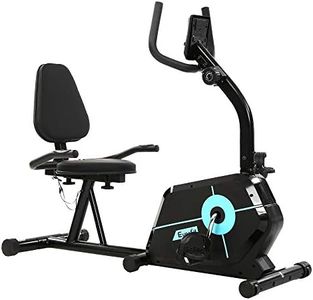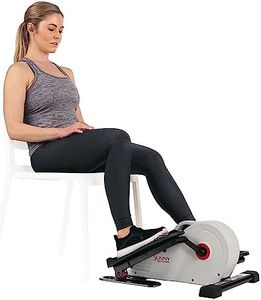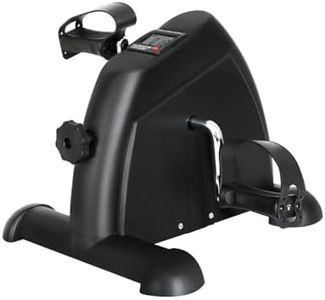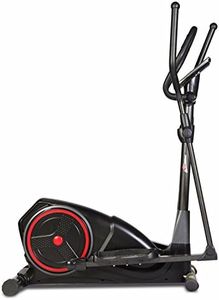We Use CookiesWe use cookies to enhance the security, performance,
functionality and for analytical and promotional activities. By continuing to browse this site you
are agreeing to our privacy policy
10 Best Elliptical Trainers
From leading brands and best sellers available on the web.Buying Guide for the Best Elliptical Trainers
Choosing the right elliptical trainer can make a significant difference in achieving your fitness goals, whether you're seeking low-impact cardio, building endurance, or adding variety to your workouts. To find the best fit, it's important to focus on features that directly impact comfort, usability, and long-term satisfaction. Understanding key specifications will help you match the right elliptical to your personal needs, available space, and preferred workout style.Stride LengthStride length is the distance the pedals travel back and forth with each rotation, typically measured in inches. This is important because it influences how natural and comfortable your movement feels. Shorter stride lengths (around 14-16 inches) are generally suitable for shorter users or those looking for compact machines, while longer stride lengths (18-22 inches) are ideal for taller individuals or those desiring a longer, more elongated motion that more closely mimics running. To pick the right stride length, consider your height and how much room you want your legs to move—test machines if you can to ensure it feels right.
Resistance LevelsResistance levels refer to how hard it is to pedal, and they control workout difficulty. More resistance levels offer a wider spectrum, from gentle warm-ups to tough, strength-building sessions. Entry-level machines might have 8-12 levels, mid-range ones offer 16-20, and high-end models can have 25 or more. If you want more room to progress or several household members with varying needs, higher resistance is valuable. Think about whether you need simple, straightforward workouts or if you want the challenge and variety that more resistance levels provide.
Incline OptionsIncline options let you adjust the slope of your workout. Some ellipticals have fixed ramps while others offer manual or motorized incline changes, simulating uphill movement and adding intensity. Machines without incline are sufficient for basic cardio, but adjustable incline lets you target different muscles, add challenge, and keep workouts interesting. If you want to work on strength or variation, opt for a trainer with multiple incline options; if you just need steady-state cardio, a simple flat machine may do.
Flywheel WeightThe flywheel is the part responsible for creating a smooth and stable pedaling motion. A heavier flywheel usually means smoother operation and a more natural feel because it generates more momentum, which reduces jerky movements. Flywheels typically range from about 10 to 30 pounds. Lighter flywheels can make the ride feel choppier, so if you prefer a fluid experience or want to train intensely, go for heavier flywheels. If portability and size matter more, lighter options may be acceptable for gentle exercise.
Foot Pedal AdjustabilityAdjustable foot pedals allow you to change the position or angle to suit your comfort and biomechanics. This spec matters for reducing strain and preventing injury, especially if you plan on using the trainer often or for long sessions. More adjustability is especially helpful for people with foot or joint sensitivities. If comfort is a top priority, look for trainers with multiple pedal settings—otherwise, fixed pedals may be fine for moderate or occasional use.
Console FeaturesThe console is the dashboard of your elliptical, displaying workout data such as time, distance, calories, speed, and often heart rate. More advanced consoles may offer built-in workout programs, Bluetooth, app compatibility, speakers, or touchscreen displays. Simple consoles work well if you want to track basic progress, while advanced ones offer more motivation, entertainment, and connectivity. Think about how much guidance, feedback, or tech engagement you’d like during your workouts.
Size and Weight CapacityThe physical size of the elliptical and its maximum supported user weight are crucial for home use. Smaller, lighter machines save space and can be easier to move but may feel less stable, especially during intense workouts or for larger users. Full-size trainers are generally more robust and suitable for all body types. Always check if the machine fits your space and if it can safely support your weight—choose a model that matches your room and body needs for comfort and safety.
